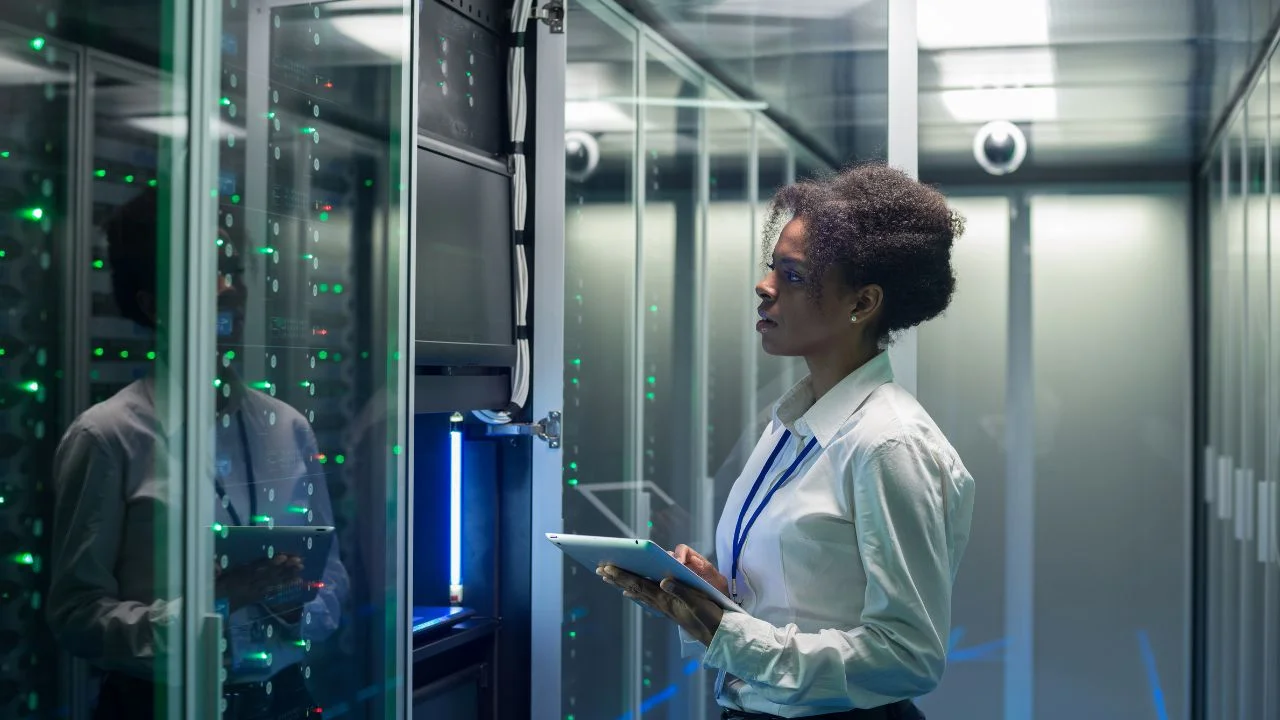The Difference Between Renewable and Non-Renewable Resources
01 Aug, 202311 minIn today's world, understanding the difference between renewable and non-renewable resources...

In today's world, understanding the difference between renewable and non-renewable resources is more important than ever. Renewable and non-renewable energy are two types of energy sources that come with their own advantages and disadvantages, and both play their part in helping to power the planet and our daily lives.
Sources of renewable resources are those that can be replenished over time, while non-renewable resources cannot. By understanding the difference between renewable and non-renewable resources, we can make more informed decisions about how we use energy and how we protect our environment for future generations.
This guide will further explore the difference between renewable and non-renewable resources before delving into the advantages and disadvantages of renewable and non-renewable energy.
Renewable energy vs non-renewable energy
Sources of renewable and non-renewable energy have advantages and disadvantages and come with different origins, environmental impacts, and sustainability. Before we delve into the advantages and disadvantages of renewable and non-renewable energy, let’s define the difference between the two.
Renewable energy
Renewable energy is produced from natural sources that can be replenished over time. Sources of renewable energy are often considered a more sustainable solution than non-renewable energy because they do not produce pollutants and greenhouse gases that are harmful to the planet.
There are various renewable energy sources, each with its own benefits. Some of the main sources of renewable energy include the following:
- Solar
- Wind
- Biomass
- Hydroelectric
- Geothermal
Non-renewable energy
The most significant difference between renewable and non-renewable resources is that non-renewable energy comes from finite resources that will eventually be depleted. They are considered less sustainable and damaging to the planet, with non-renewable energy being responsible for producing pollutants such as greenhouse gases.
Similar to renewable energy, there are different types of non-renewable energy sources. These include the following:
- Coal
- Oil
- Natural Gas
- Nuclear Energy
Now that we've established the difference between renewable and non-renewable resources, let's explore the advantages and disadvantages of renewable and non-renewable energy. We will begin with the advantages and disadvantages of renewable energy.
3 Advantages of renewable energy
Renewable energy is a growing market predicted to be worth more than $2 trillion by the close of the decade. From combatting climate change and being an inexhaustible source of energy to the jobs it creates and the benefits it brings to the global economy, renewable energy has numerous benefits. Let's explore three of the main advantages of renewable energy.
1. Renewable energy is combating climate change
One of the key advantages of renewable energy is that they do not emit greenhouse gases, which are the primary cause of climate change. Sources of renewable energy, including wind and solar power, are helping to reduce the amount of CO2 and other harmful pollutants in the atmosphere.
Sources of renewable energy are positively impacting the environment as it is helping to slow down the disruption to plant and animal life, rising sea levels, extreme weather conditions, and other associated effects of climate change. Global leaders have even stated that by 2030 we must turn to renewables to make up 50% of our energy sources to help the planet become net-zero by 2050.
2. Sources of renewable energy are inexhaustible
Another key advantage of renewable energy sources is that they are inexhaustible because they originate from natural resources and processes that are constantly being renewed. For example, the sun, wind, water cycle, and biomass waste are all elements that are used to produce renewable energy. These sources of energy can be used over and over again without being depleted, making them highly beneficial and ever reliable.
Unlike sources of non-renewable energy like fossil fuels, which are finite, renewable energy sources can be used to meet our energy needs for the foreseeable future, making them an essential part of the solution to the global climate crisis.
3. Creates renewable energy jobs and economic benefits
As mentioned, the renewable energy industry is growing. With this growth comes the need for talent to take on renewable energy jobs to fulfil projects and maintain efforts toward a net-zero future. In 2022, renewable energy jobs reached 12.7 million worldwide, and the International Renewable Energy Agency IRENA has forecasted that this number could rise to 43 million renewable energy jobs by 2050.
The economic benefits of renewable energy are also significant, not only by providing opportunities for talent within the industry to earn a healthy income. Renewable energy can also save businesses and consumers money. For example, as the cost of solar and wind energy declines, renewable energy is becoming competitive with non-renewables and, in some cases, even cheaper. In the long-run renewable energy has the potential to stabilise energy prices for the global population.
3 Disadvantages of renewable energy
Despite renewable energy providing major benefits to our planet and the global population, there are some drawbacks to be aware of. Renewable energy has some disadvantages, from its lack of availability around the clock, high installation costs, and significant space needed for renewable projects. In this section, we will look at three disadvantages of renewable energy.
1. Renewable energy is not always available 24/7
Although sources of renewable energy are infinite, they are not always available 24/7 as they rely on natural resources. For example, if the weather is poor and the sun doesn't shine, solar PV panels on household roofs that generate electricity from sunlight cannot work, resulting in homeowners having to turn back to traditional non-renewable alternatives.
Similarly, if the force of the wind isn't strong enough, then onshore and offshore wind farms that generate renewable energy cannot work optimally. Additionally, with hydropower, if the water levels are not strong enough or there is a drought, this will affect the energy produced.
Experts will factor in the geography of renewable projects and select areas where the opportunity to generate energy is greater. However, as nature can sometimes be unpredictable, this challenge can occur.
2. Significant space is needed for renewable energy projects
Following on from mentioning the consideration of geographic locations when it comes to renewable energy projects, the space needed for these projects is significant and not always viable or available to be used in every nation. For example, countries with regular sunshine could benefit from solar power. However, they may miss the chance to produce this renewable energy source if the terrain conditions aren't suitable or if other infrastructures already occupy the space.
Additionally, renewable energy sources are not always available when we need them due to the limited space to store the energy produced through renewables. Although several technologies can store renewable energy, they all have their drawbacks. For example, batteries are expensive and have a limited lifespan. At the same time, pumped-storage hydroelectricity is a more efficient way to store energy, but it requires suitable terrain that is not available worldwide.
3. Initial costs for renewable energy installations are high
We mentioned that renewable energy benefits the global economy, and although true, the downside is that the initial costs for renewable energy installations are high.
This is because renewable energy technologies are still in their early stages of development. Therefore the cost of equipment and installation is higher than it would be for more mature technologies available for fossil fuels. For example, it costs roughly $1 million to produce one megawatt of electricity via a wind turbine, which is enough to power around 1,000 homes annually.
However, as renewable energy technologies become more popular and resources become more widespread, these initial installations could continue to drop. For example, the installation costs of renewable energy technologies like solar PVs have declined by as much as 80% over the last decade, and this will likely drop further over the next 10 years.
3 Advantages of non-renewable energy
80% of the world's energy comes from non-renewable sources, making it something we still heavily rely on. Non-renewable energy has some benefits, including its cost-effectiveness, ability to produce more power, and how it can be supplied all around the world. Here are three advantages of non-renewable energy.
1. Non-renewable energy is cheaper and has significant subsidies
Arguably the most significant advantage of non-renewable energy is that it is currently cheaper and more cost-efficient than renewable energy. One of the main reasons is that non-renewable resources, such as oil, coal and gas, are more abundant than renewable energy sources, meaning they are easier to find and extract, lowering the production cost.
Non-renewable energy sources have been around longer than renewable energy sources, which means more infrastructure is in place to support their use. This infrastructure, such as pipelines and power plants, lowers the cost of delivering non-renewable energy to consumers.
The International Monetary Fund (IMF) also found that the fossil fuel industry, including oil, coal and gas production, resulted in global subsidies of $5.9 trillion or $11 million a minute in 2020. Although this number can be seen as a positive for the worldwide economy, it could prevent world leaders from investing more in the greater need for renewables.
2. More energy is generated through non-renewable sources
Non-renewable energy sources can generate more energy than renewable energy sources as they are more concentrated, meaning they contain more energy per unit of space. For example, the power produced by coal and natural gas has a greater efficiency of 40% and 60%, respectively, compared to solar energy produced by solar panels, which can only reach between 15% and 20%.
Another reason why non-renewable energy produces more energy than renewable sources is because it is easier to source. For example, coal can be mined and burned directly to generate electricity, while solar and wind power require complex systems to collect and store the energy.
3. Non-renewable energy is supplied to almost anywhere at any time
Non-renewable energy sources are abundant and more widely available globally than renewable energy. This is especially beneficial to countries where renewable energy production has yet to reach or is out of the question. For example, a country with inconsistent water supplies will unlikely produce hydroelectric energy.
Sources of non-renewable energy can generate energy 24 hours a day, seven days a week, whether through power plants, pipelines or various transportation. Non-renewable energy can be produced regardless of weather conditions, unlike the production of renewable energy, which relies heavily on natural resources.
3 Disadvantages of non-renewable energy
There are many disadvantages of non-renewable energy. In this section, we will look at the top three, from how sources of non-renewable energy are destroying the planet, how it is harmful to our health and that we cannot rely on it forever.
1. Non-renewable energy is destroying the planet
Sources of non-renewable energy are destroying the planet in several ways. Once fossil fuels are burned, greenhouse gases are released into the Earth's atmosphere, contributing to climate change. Non-renewable fossil fuels are responsible for more than 75% of the world's greenhouse gas emissions and almost 90% of CO2 emissions. These emissions negatively impact the planet, contributing to rising sea levels, melting ice caps, and extreme weather events.
Non-renewable energy sources are not only posing issues relating to global warming but are also responsible for polluting the air and water. For example, coal mining can contaminate water supplies with heavy metals, and oil spills can devastate marine life and coastal communities.
2. Non-renewable energy is harmful to our health
While non-renewable energy sources are harmful to the planet, another disadvantage of non-renewable energy is that it harms the health of the global population. When these fuels are burned, they release pollutants into the air, including sulfur dioxide, nitrogen oxides, and carbon monoxide. These pollutants can contribute to various health problems, including respiratory problems, heart disease, stroke, cancer, and premature death.
3. Sources of non-renewable energy will not be around forever
One final disadvantage of non-renewable energy is that it is finite and will not be at our disposal forever. Non-renewable energy sources are formed over millions of years from animal and plant remains, hence the word 'fossil' in fossil fuels, and cannot be replaced once they are used up.
We've only been harnessing the power of non-renewable energy for just over 200 years, yet various sources predict we will run out of fossil fuels in the coming years. Numerous experts estimate all fossil fuels will be depleted by 2060, with our oil deposits gone by as early as 2052 and coal and natural gas lasting from now until 2060 or potentially another 100+ years.
This disadvantage of non-renewable energy could be considered an advantage as it will soon force us to rely on renewable energy solutions. However, as our reliance on non-renewable resources makes up over three-quarters of the global energy consumed, the renewable energy transition is still far from where it needs to be in order to reach the 2050 net-zero targets.
Final Thoughts
The difference between renewable and non-renewable resources and the advantages and disadvantages of both are clear. Renewable energy, for example, is important for building a sustainable future and is a source of energy we can rely on for many years to come, providing jobs and talent for people and businesses worldwide.
On the other hand, despite non-renewable energy having some benefits, it is hard to argue that its adverse effects on the planet outweigh its positives, and the continued use of non-renewable resources is becoming increasingly problematic.
Ultimately, as the world's population grows and we become more aware of the environmental impacts of our choices, it is becoming increasingly essential to switch to renewable energy resources.
Looking to grow in the renewable energy industry?
We are a leading renewable energy solutions provider with over 20 years of experience. Our renewable energy team are industry experts, partnering with global clients to help them overcome their hiring challenges with talent sourcing and project management. No matter where you are in the world, we have the solution you need.
Our specialist consultants are working on some of the world's most exciting renewable energy projects. We have access to a wide range of renewable energy jobs for engineers and professionals looking to advance their careers in the renewable energy industry.
If you are seeking a partner to help you reach your renewable energy goals, contact NES Fircroft today. We would be happy to discuss your needs and how we can help you succeed.









